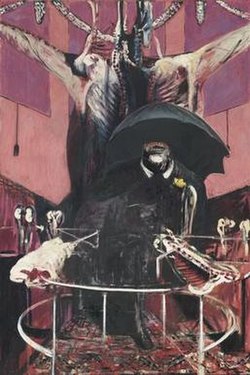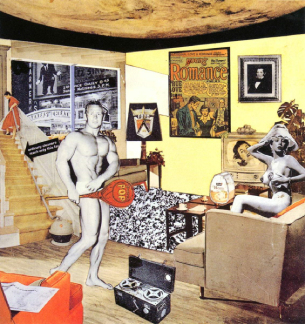The Bretton Woods Conference, held in July 1944 in New Hampshire, was a pivotal event that brought together delegates from 44 countries to reshape the global economic landscape following World War II. The conference’s primary goal was to establish a stable international monetary system and foster cooperation between nations. A key outcome was the decision to peg national currencies to the U.S. dollar, which was itself backed by gold. Additionally, two major institutions were created: the International Monetary Fund (IMF) and the World Bank, marking a significant step toward economic stability and recovery. However, the impact of this event extended beyond economics—it also left a lasting imprint on the world of art, influencing the direction of artistic expression during the postwar period.
Postwar art refers to the period following World War II, leading up to the rise of contemporary art. Rather than being defined by a single movement, this era saw the development of various styles, including Abstract Expressionism, Arte Povera, Socialist Realism, Minimalism, and Pop Art. Artists, shaped by the global aftermath of the war, created works that reflected a collective atmosphere of reflection and renewal, often addressing themes of reconstruction and social change.

One such work was Francis Bacon’s 1946 painting Painting, which stands as a powerful critique of war. Created in the immediate aftermath of the war, the piece blends expressionism with grotesque elements. Its central figure, an amorphous and menacing creature, evokes both a politician and a monstrous entity, set against a bleak, claustrophobic backdrop. Rather than directly depicting the violence of war, Bacon captures the psychological and moral devastation it leaves behind. The distorted bodies and figures in the painting symbolize a society deeply scarred by conflict, while the lack of clear contours and the dark, fragmented environment reflect a fractured reality. Through this piece, Bacon challenges the viewer to confront the horrors of a postwar world that has lost its identity and humanity, underscoring the need for both physical and moral reconstruction.
In contrast to Bacon’s grim reflection, the rise of Pop Art, with its use of mass culture imagery—such as advertisements, comics, and celebrity figures—responded to the growing tide of consumerism.

Richard Hamilton, a key pioneer of the movement, created Just What Is It That Makes Today’s Homes So Different, So Appealing? in 1956. This collage encapsulates the era’s shift toward a consumer-driven culture. By blending images from magazines, advertisements, and photographs, Hamilton crafts a visual commentary on the domestic life of the 1950s. The bright colors and bold imagery, including depictions of a provocative woman and a muscular man surrounded by consumer goods, offer both a critique and a celebration of postwar society.
Hamilton’s work addresses how material objects and advertising shape both our lifestyle and our self-perception, all while commenting on the evolving social norms, particularly surrounding sexuality and the representation of women. The work underscores the irony of an era where the American Dream was marketed as a consumer product, blending lightheartedness with deeper social commentary. Hamilton’s collage not only captures the essence of the time but also marks a fundamental shift in art, dissolving the boundaries between high and popular culture and paving the way for the further development of Pop Art.
The art produced during the Bretton Woods period, therefore, was not merely a reflection of a changing world—it also served as a critique and dialogue about identity, existentialism, and politics. Through various artistic movements, artists responded to the hopes and anxieties of an era in search of a new beginning, offering both an exploration of contemporary issues and a vision of the future.


